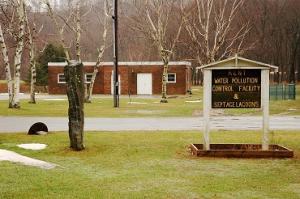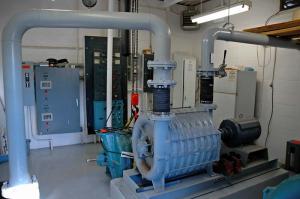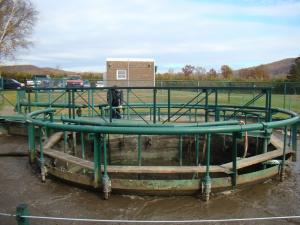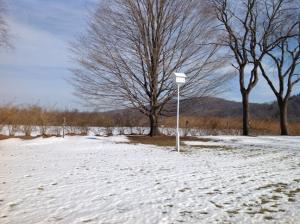Treatment Plant

The Treatment Plant
The treatment plant operates under a permit issued by the State of Connecticut Department of Energy and Environmental Protection.
Sewage
Sewage arriving through the mains is delivered to two big aeration tanks, where air is bubbled through the sewage to encourage a strong growth of bacteria to consume the sewage. The sewage flows from the aeration tank to two tanks that filter the bacteria and undigested sewage, which are then returned to the aeration tank for further treatment. The clarified water then is discharged from the treatment plant.

Compressor

Aeration Tanks
The original plant discharged the treated water directly to the Housatonic River. However, the water is now allowed to infiltrate the soil to the east of the Sewer Plant. The soil allows for further treatment of the water so that it is harmless before moving into the River. Kent is fortunate in that it is one of a handful of municipal systems that is allowed to discharge effluent to groundwater. This benefits the town by reducing the levels of treatment that would be needed if the discharge was direct to the River.
The treatment process produces a by-product called sludge. Liquid sludge is pumped to a device that removes the water to make it more solid. This device is called a belt filter press. The dewatered sludge is then treated with lime to kill any remaining bacteria in order to prevent odors and render the bacteria inert. The sludge is then spread onto a leased 12-acre field adjacent to the treatment plant.

Birds live happily next to the plant’s fields.
Once the sludge is spread on the field, it is mixed into the soil using a harrow. Crops are typically planted on the field in order to use some of the nutrients that are contained in the sludge.
Septage
In the early 1980s the CTDEP provided a grant to the Town to construct a Regional Septage receiving facility. Septage is the sewage that is removed from septic tanks when they are pumped. Private septic tank haulers bring waste to the plant and discharge it into one of two lagoons. The lagoons are used to stabilize the waste using lime to kill bacteria and the water in the waste is allowed to infiltrate into the soil beneath the lagoons. Once a year, the remaining sludge is spread on a leased 12 acre field adjacent to the plant.

